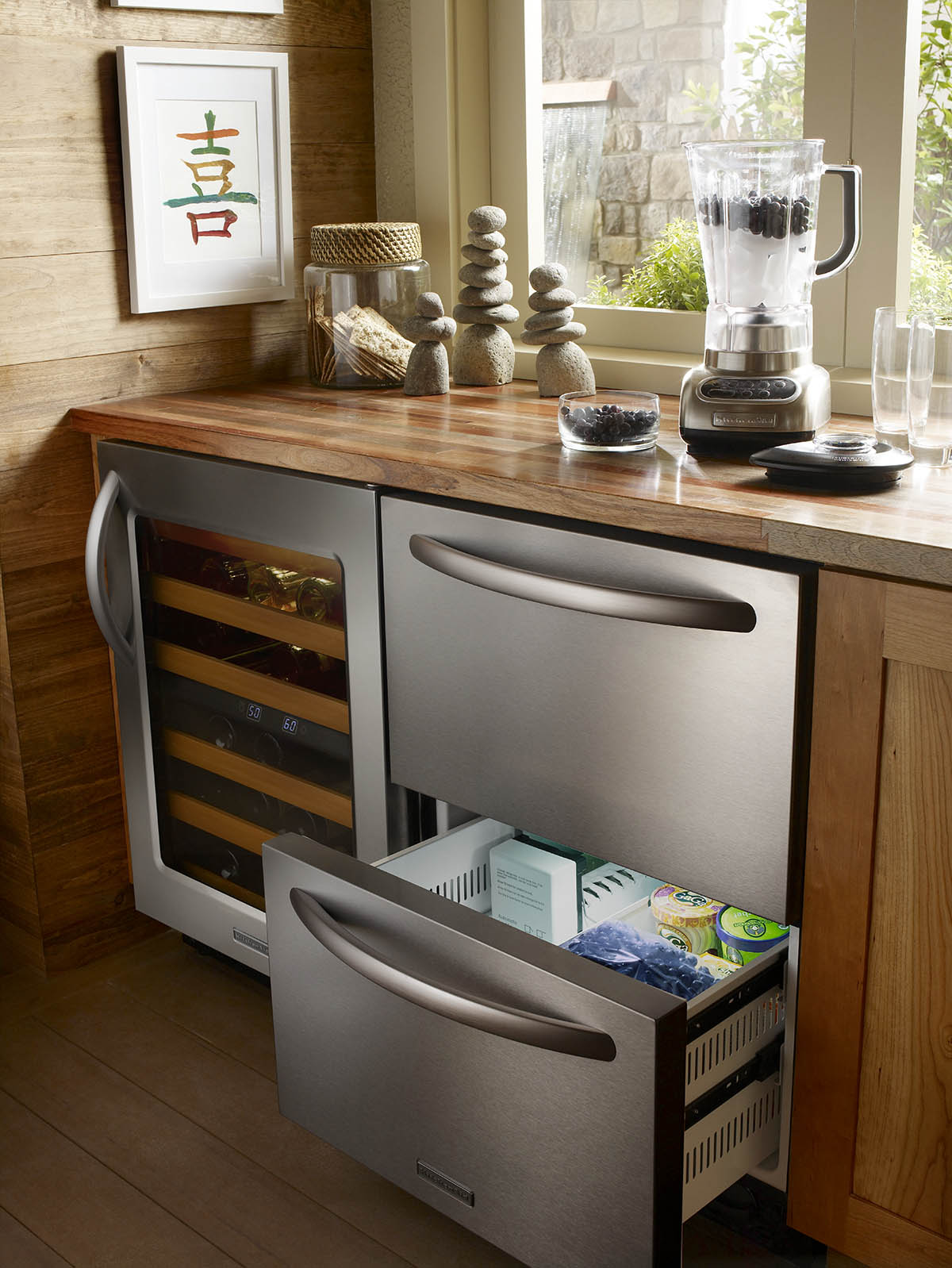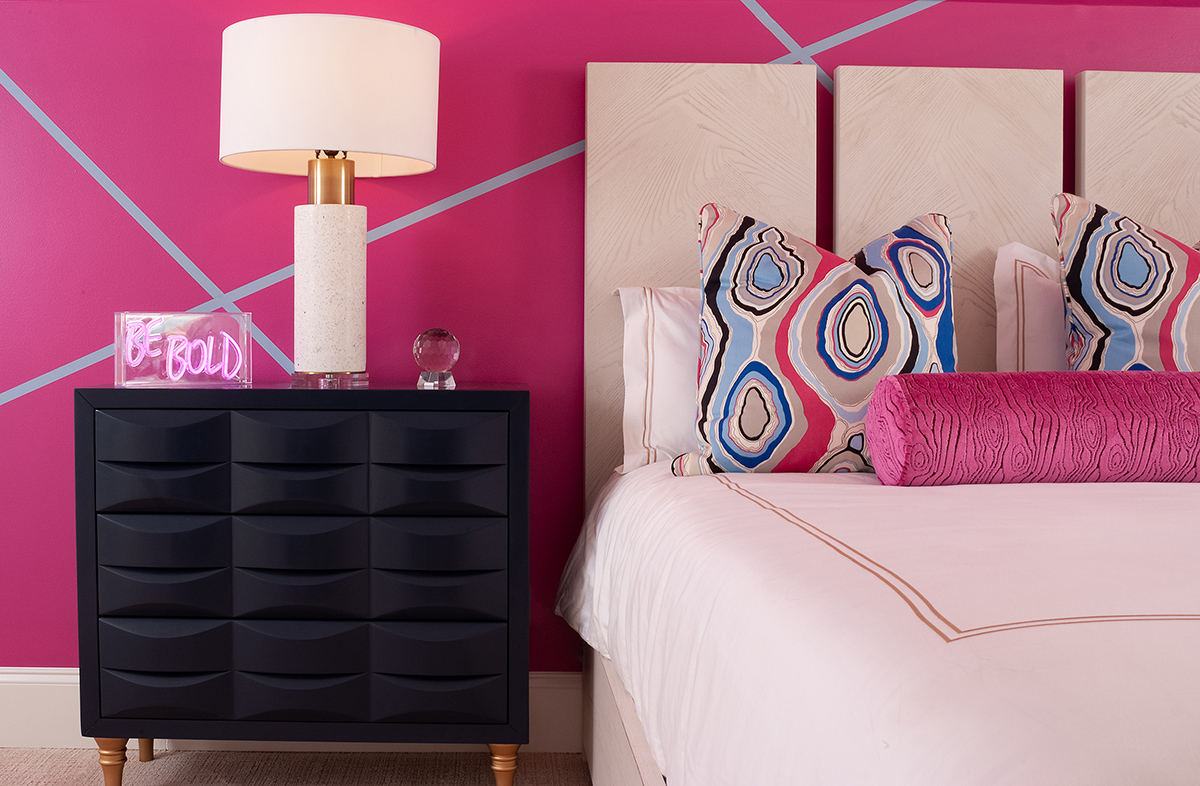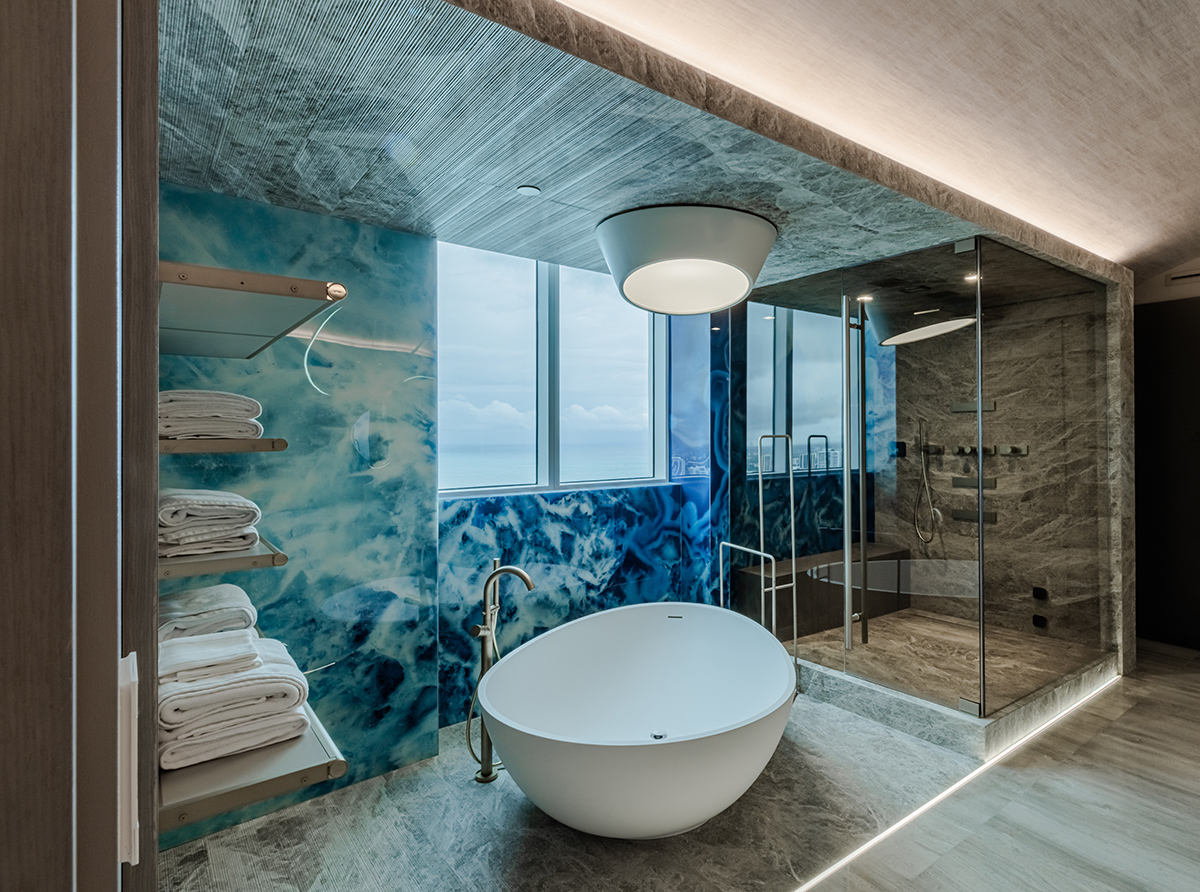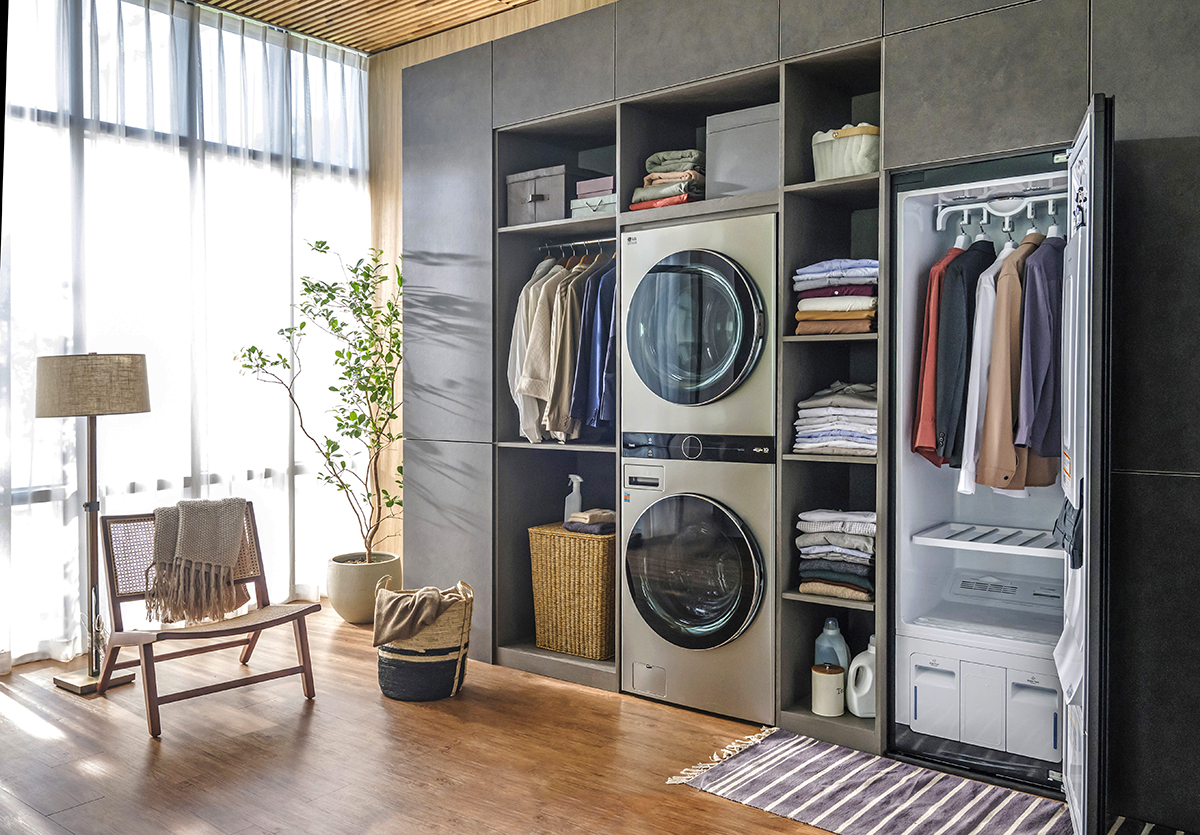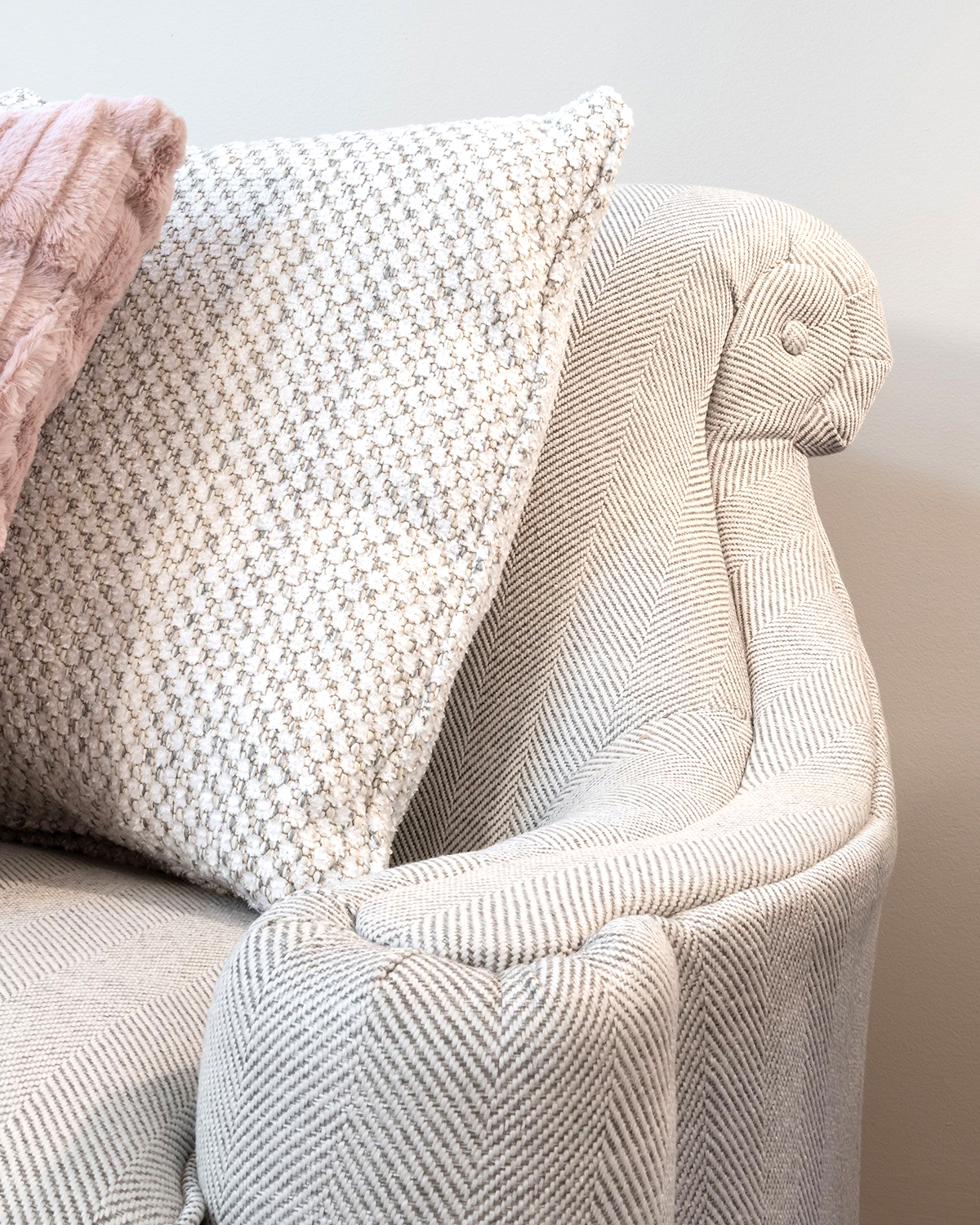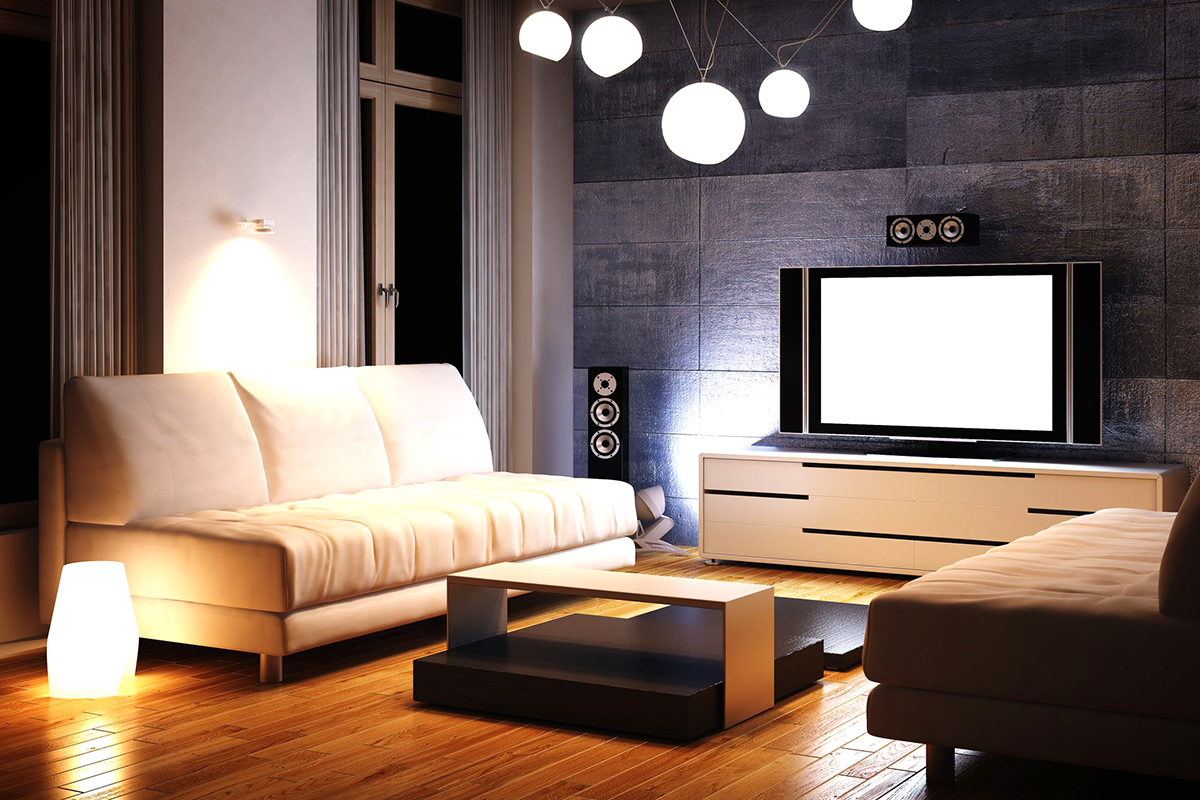WRITER | JENNIFER BUTLER AND AMY VANDE STREEK
5 Fresh Solutions for Flooring
Run of the mill flooring options are always available, but why not try something special for a surface you make contact with every day? These inspiring new and unexpected flooring alternatives will elevate the ground you walk on. Basic floors don’t come close to comparing with these eye-catching, durable, and simply luxurious flooring materials.
Silk, Cashmere, and Worsted Wool
If you’re going for pure comfort, there is nothing softer or more breathtaking than silk, cashmere, or worsted wool floor covering. It’s everything you would imagine, warm and soft as butter, with a slight shimmer. These natural fibers are the epitome of luxury, and they are remarkably durable. Wool is a great low-maintenance option for floors and rugs, but Cashmere goat wool from Pakistan and India is finer, stronger, softer, lighter, and three times more insulating than sheep’s wool. Worsted-spun wool is 8- to 10-ply combed wool that is thicker, heavier (but not bulkier), and softer than typical wool. It is also used in the construction of menswear, as the fibers are fine, long wearing, smooth, and have a subtle glossy appearance. If it’s luxurious to wear, it’s certainly lavish to walk on.
Whoa There, Terrazzo
Remember the floors of your grade school corridors? They’re probably still there, and they’re making a comeback as a chic, luxury flooring solution. Surprisingly, terrazzo’s earliest appearance goes back to an early Neolithic settlement in what is now Turkey and was made with stone pieces pressed into cement and then polished. It was developed about 10,000 years later in Venice as a low-cost flooring material made of marble chips and goat clay. Appearing in the US first in the 18th century and again in the 1970s, it’s really no wonder that it’s back – and better than before.
Today’s iteration of terrazzo uses epoxy resin as an aggregate binder for interior applications. The traditional aggregate options have expanded from marble to include recycled glass, concrete, metal, mother of pearl, shell, and porcelain. There are also new color, shape, size, and layout options resulting in more artistic variations than the common muted colors and confetti-like stone chip arrangements that we’re most familiar with.
Lava Rock Your Socks Off
A naturally hardened volcanic stone, basalt, underlies more of the Earth’s surface than any other rock type. Basalt, or lava rock, forms as it rapidly cools when exposed to the planet’s surface. It is a very hard black stone and is commonly used in road surface aggregates. As flooring, glazed basalt tile is a unique statement-making choice, with beautiful shade gradations and soft textural depth due to its fine-grained quality and slightly etched surface. Slip-resistant and hard wearing, lava rock is a unique solution for a natural look.
Faux the Love of Marble
If you love the look of marble but not the cost, there are some beautiful porcelain tile options that offer the look of stone without the expense of natural stone. Real marble will deteriorate over time, especially in areas exposed to water, like a shower. Unless you prefer that worn look and don’t mind the extra maintenance of real stone, porcelain is a more amenable alternative for both high-traffic and wet areas. Porcelain itself isn’t a surprising new material choice, but with a honed marble appearance, it’s a new option that will transform your ordinary tile floor into something striking and distinctive.
Weave Your Shoes at the Door
More commonly associated with placemats and window coverings, woven vinyl might not be the first thing you think of for flooring, but it turns out that it is an excellent option for floors for the same reason we use placemats beneath our dinnerware. Its woven construction has a handcrafted look and makes it a tough, hard-wearing product.
While vinyl doesn’t seem like a groundbreaking flooring solution, the recipe has been modified to offer a new spin on an old material, with antimicrobial properties and indoor air quality protection. With fewer plasticizers, PVC-free backing systems, renewable vegetable content and recyclable content, vinyl now treads more lightly in its material makeup than ever before. For a more upscale look in interior residential environments, woven vinyl is best used in dry, lower-traffic areas – perfect for your next laundry room, walk-in closet, or home office makeover.
Wood, tile, and standard carpet flooring aren’t going anywhere soon, but there’s a lot of room to shake it up with new variations. As material innovators focus on solutions that are more natural and regenerative, new developments in flooring deliver big on design and comfort, low maintenance, and renewable resources. When it’s time to change up your floors, don’t be afraid to try something a little different and extra special that you’ll surely enjoy for years to come.



